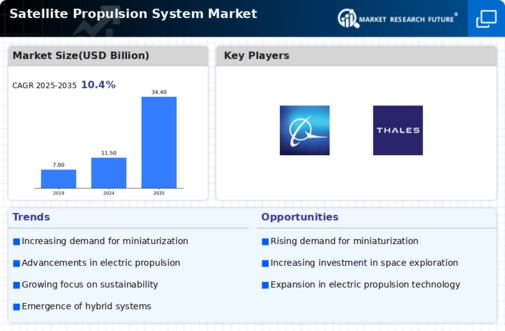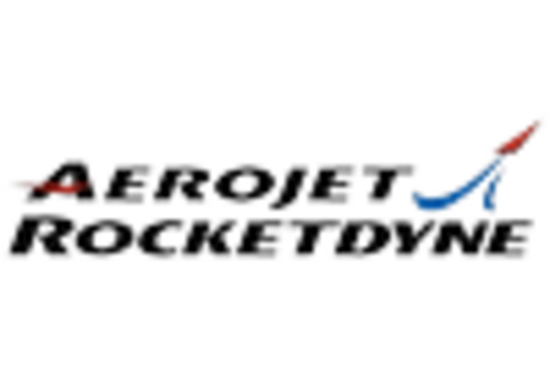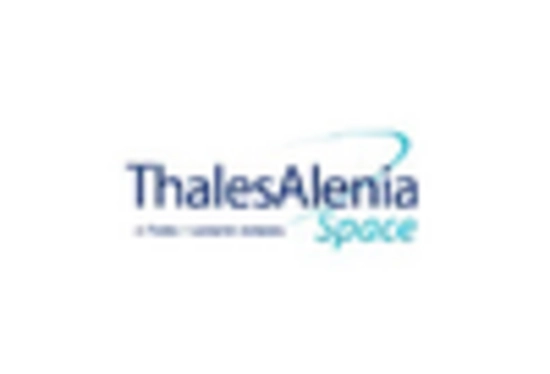Market Trends
Key Emerging Trends in the Satellite Propulsion System Market
In the fiercely competitive Satellite Propulsion System Market, market share positioning strategies play a pivotal role in shaping the success and influence of companies within the industry. Technological differentiation stands out as a key strategy, with manufacturers striving to offer cutting-edge propulsion systems that exhibit superior efficiency, reliability, and versatility. By investing significantly in research and development, companies aim to position themselves as leaders in innovation, catering to the evolving needs of satellite operators and gaining a competitive edge. Technological differentiation not only enhances market share but also establishes a reputation for providing state-of-the-art propulsion solutions.
Strategic partnerships and collaborations are instrumental market share positioning strategies in the Satellite Propulsion System Market. Recognizing the multidisciplinary nature of the space industry, companies form alliances with satellite manufacturers, space agencies, and other industry stakeholders. These collaborations contribute to market share positioning by fostering knowledge exchange, resource sharing, and joint development efforts. Through strategic partnerships, companies position themselves as comprehensive solution providers capable of addressing diverse propulsion requirements and supporting a wide array of satellite missions.
Customization and adaptability emerge as crucial market share positioning strategies in the Satellite Propulsion System Market. With the industry witnessing diverse satellite missions and applications, companies that offer customizable propulsion solutions gain a competitive advantage. Tailoring propulsion systems to meet the specific needs of different satellites and mission profiles positions manufacturers favorably. The ability to provide adaptable solutions, including variations in thrust levels, fuel efficiency, and compatibility with various satellite sizes, reinforces market share positioning by addressing the unique requirements of satellite operators.
Operational effectiveness and system reliability are paramount market share positioning factors in the Satellite Propulsion System Market. As satellite missions become more complex and critical, companies focus on delivering propulsion systems that ensure optimal operational performance and mission success. Market share positioning is influenced by the ability to provide propulsion solutions characterized by high reliability, precision in orbital maneuvers, and robust operational capabilities. Manufacturers that emphasize operational effectiveness create a competitive advantage, positioning themselves as trustworthy partners for satellite operators.
Global market expansion is a strategic factor shaping market share positioning in the Satellite Propulsion System Market. Companies aiming to capture a significant market share extend their reach across diverse geographical regions. Establishing a global presence allows manufacturers to tap into various markets, understand regional preferences, and adapt their propulsion systems to meet specific requirements. Market share positioning is influenced by the ability to cater to the needs of satellite operators worldwide, addressing regional nuances and fostering customer engagement on a global scale.
Cost-effectiveness is a pivotal market share positioning strategy in the Satellite Propulsion System Market. As the industry faces cost pressures and competitive pricing dynamics, manufacturers that provide propulsion systems with an optimal balance between performance and affordability gain a strategic advantage. Market share positioning is influenced by the ability to offer cost-effective solutions without compromising on quality or functionality. This strategy aligns with the broader trend of delivering value-driven propulsion systems, appealing to satellite operators looking to optimize their investments.
Brand reputation and customer trust are paramount market share positioning factors. Manufacturers that build and maintain a strong brand image, supported by a track record of delivering high-quality, reliable propulsion systems, stand out in the market. Positive testimonials, user feedback, and references from satisfied satellite operators contribute to market share positioning by establishing a reputation for responsiveness, reliability, and overall customer satisfaction. A robust brand presence enhances market share by instilling confidence in satellite operators and reinforcing the manufacturer's position as a leader in the Satellite Propulsion System Market.









Leave a Comment